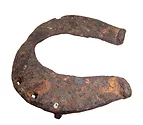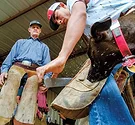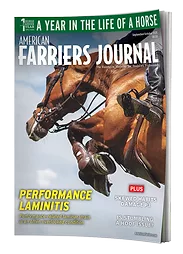Advertise Follow Us
American Farriers Journal

View Archived Issues
January/February 2023
Volume: 49
Edition: 1
American Farriers Journal is the “hands-on” magazine for professional farriers, equine veterinarians and horse care product and service buyers.
-
Table Of Contents
Table Of Contents
Reliance on the Basics Benefits the Horse and Farrier
Hank Chisholm urges reliance on the foundations of farriery for the good of the horseRead More3 Common Causes for Failure of the Veterinarian-Farrier Relationship
Recognize and avoid situations in which either party inadvertently contributes to losing focus on the horseRead More“This is How We Do It” is not a Good Answer
How do we apply decisions on conformational anomalies if we don’t follow the basic normal anatomical function in our daily work or even understand the reasons why we should?Read MoreHow Grip and Purchase Benefits the Horse
Understanding grip and purchase will improve your understanding of farrier physicsRead MoreCustom Trailer Keeps Oregon Farrier Dry
Efficient workstation keeps Zach Morris dry and workingRead MoreFarrier Families Share Strategies to Teach Hoof Care
Horseshoeing might be in their genes, but there’s plenty of blood, sweat and tearsRead MoreA Farrier’s Legacy
Passing on your hoof-care knowledge leaves an indelible mark on the industryRead MoreResearch Journal: January/February 2023
The information, ideas, and opinions expressed are those of the author and do not necessarily represent those of the United States Department of Agriculture.Read More -
Featured Articles
Featured Articles
Reliance on the Basics Benefits the Horse and Farrier
Hank Chisholm urges reliance on the foundations of farriery for the good of the horseRead MoreFarrier Families Share Strategies to Teach Hoof Care
Horseshoeing might be in their genes, but there’s plenty of blood, sweat and tearsRead More3 Common Causes for Failure of the Veterinarian-Farrier Relationship
Recognize and avoid situations in which either party inadvertently contributes to losing focus on the horseRead More - Digital Edition
-
Online Extras
Online Extras














